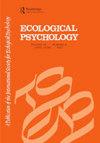Individuals Among the Pots: How Do Traditional Ceramic Shapes Vary Between Potters?
IF 1.7
3区 心理学
Q3 PSYCHOLOGY, EXPERIMENTAL
引用次数: 13
Abstract
ABSTRACT At the crossroad of archeology and experimental psychology, we addressed the issue of interindividual variability in traditional ceramic shapes. The goal was to explore whether such variability could imply potter signatures. We set up a field experiment with 5 expert Nepalese potters, asking them to produce 3 shapes (replicated 5 times). The 2D profiles of the experimental productions were analyzed with a shape analysis method borrowed from biology. In a complementary experiment focusing on shape discrimination, the participants were asked to visually identify their own productions and those of their colleagues. Results indicated that the potters produced slightly but significantly different shapes. We assume that during apprenticeship individuals developed their own motor skills, which reflect upon the finished products. Interpreting shape variability in terms of individuals could provide supplementary information on the social organization of the production, either for modern or ancient periods. As for shape discrimination, our preliminary results indicated that a few potters visually distinguished individual signatures. Those craftsmen could play a key role in the selection and evolution of the traditional ceramic shapes.陶罐中的个体:传统陶瓷形状如何在不同的陶罐之间变化?
在考古学和实验心理学的交叉路口,我们研究了传统陶瓷形状的个体差异问题。目的是探索这种可变性是否意味着波特特征。我们与5位尼泊尔制陶专家建立了一个实地实验,要求他们制作3个形状(重复5次)。采用借鉴生物学的形状分析方法对实验产品的二维轮廓进行了分析。在另一项补充性实验中,研究人员要求参与者从视觉上识别自己和同事的作品。结果表明,陶工制作的形状略有不同,但差异很大。我们假设在学徒期间,个人发展了自己的运动技能,这反映在成品上。从个体角度解释形状的变化可以为现代或古代生产的社会组织提供补充信息。在形状识别方面,我们的初步结果表明,少数陶工能从视觉上区分个体签名。这些工匠在传统陶瓷造型的选择和演变中发挥了关键作用。
本文章由计算机程序翻译,如有差异,请以英文原文为准。
求助全文
约1分钟内获得全文
求助全文
来源期刊

Ecological Psychology
PSYCHOLOGY, EXPERIMENTAL-
CiteScore
3.30
自引率
10.50%
发文量
8
期刊介绍:
This unique journal publishes original articles that contribute to the understanding of psychological and behavioral processes as they occur within the ecological constraints of animal-environment systems. It focuses on problems of perception, action, cognition, communication, learning, development, and evolution in all species, to the extent that those problems derive from a consideration of whole animal-environment systems, rather than animals or their environments in isolation from each other. Significant contributions may come from such diverse fields as human experimental psychology, developmental/social psychology, animal behavior, human factors, fine arts, communication, computer science, philosophy, physical education and therapy, speech and hearing, and vision research.
 求助内容:
求助内容: 应助结果提醒方式:
应助结果提醒方式:


